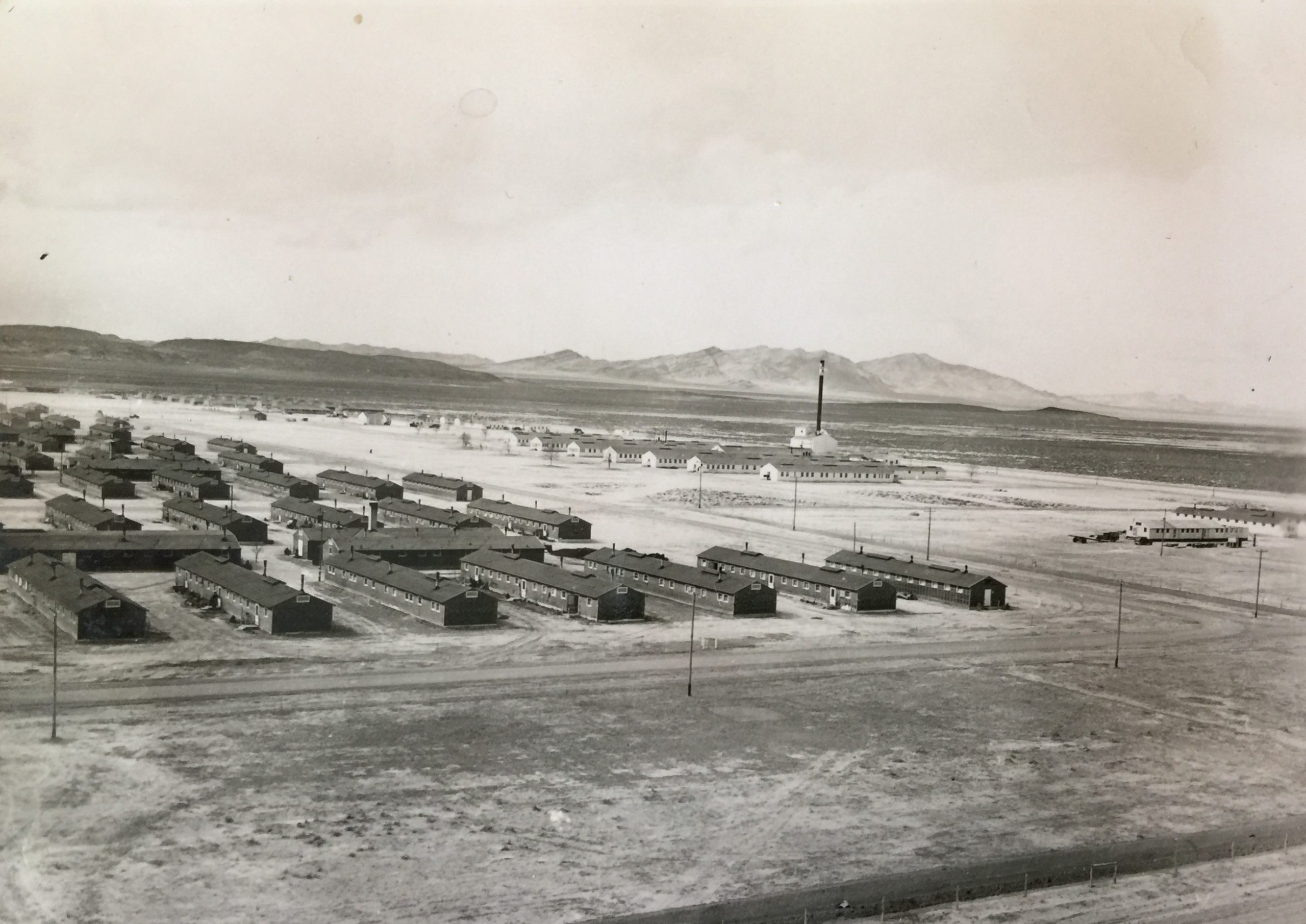The Incarceration Experience
 On December 7, 1941, the United States entered World War II after Japan’s attack on Pearl Harbor. As jingoistic sentiments rose, Japanese American loyalty to the country was called into question. Arrests on Japanese American leaders by the FBI as well as confiscations of many Japanese families’ financial assets shortly began. On February 19, 1942, President Franklin D. Roosevelt signed Executive Order No. 9066, setting exclusion zones along the West Coast where people could be removed from their own homes and properties for security reasons. The War Relocation Authority (WRA) was thus established, on March 19, 1942, which had the power to execute the forced relocation of the Japanese American residences. This policy was fueled by the fear of espionage committed by Japanese Americans, although throughout the duration of the war no such actions were proven. Since the war broke out, approximately 120,000 people of Japanese ancestry were evacuated to assembly centers, from where they were processed and sent to internment camps. Despite the WRA first president Milton S. Eisenhower’s initial hope for a simple and swift resettlement of Japanese American population into civilian life in a location away from military zones, most Japanese Americans had to stay in the camps for the entirety of the war.
On December 7, 1941, the United States entered World War II after Japan’s attack on Pearl Harbor. As jingoistic sentiments rose, Japanese American loyalty to the country was called into question. Arrests on Japanese American leaders by the FBI as well as confiscations of many Japanese families’ financial assets shortly began. On February 19, 1942, President Franklin D. Roosevelt signed Executive Order No. 9066, setting exclusion zones along the West Coast where people could be removed from their own homes and properties for security reasons. The War Relocation Authority (WRA) was thus established, on March 19, 1942, which had the power to execute the forced relocation of the Japanese American residences. This policy was fueled by the fear of espionage committed by Japanese Americans, although throughout the duration of the war no such actions were proven. Since the war broke out, approximately 120,000 people of Japanese ancestry were evacuated to assembly centers, from where they were processed and sent to internment camps. Despite the WRA first president Milton S. Eisenhower’s initial hope for a simple and swift resettlement of Japanese American population into civilian life in a location away from military zones, most Japanese Americans had to stay in the camps for the entirety of the war.

The purpose of the assembly centers, to where the Japanese Americans were first sent, was to expedite the relocation process. 11 of them were at fairgrounds or racetracks, and they were temporary living spaces created hastily from stables or barracks designed for soldiers. As these assembly centers became overcrowded and tensions mounted, the WRA decided to move the Japanese Americans to Relocation Centers, or commonly known as the “internment camps.”
There were a total number of 10 internment camps: Tule Lake and Manzanar in California, Poston and Gila River in Arizona, Rohwer and Jerome in Arkansas, Minidoka in Idaho, Topaz in Utah, Granada in Colorado, and Heart Mountain in Wyoming. Although the weather and atmosphere varied between each location, the camp spaces were all arranged into blocks that served different functions. Residential blocks consisted of barracks, a mess hall, latrines, laundry, and recreation hall. The WRA had not planned for any schooling originally, so school education for children began as very primitive affairs until the internees took the matter into their own hands. There were also employment inside the camps, low pay jobs, such as making camouflage nets, that out of school internees took, as all their assets were then gone. Those who had training in a special industry were put to work in a related field for the camps.


Relocating out of the camps was possible but limited. Through the efforts of the National Japanese Student Relocation Council (NJSRC), those who were college age could leave the camps on three conditions: 1) if they got accepted from a college that allowed Japanese Americans to attend; 2) if they had the financial means to pay for college; and 3) if they were cleared by the FBI. Getting into college was always a challenge, and it was proven to be particularly difficult for the Japanese American youths during war time. Many colleges on the mainland did not accept Japanese Americans, and obviously a lot of young Niseis lacked the funds to attend college. Furthermore, many parents did not want their children to leave their side and go out to the hostile world without any family support. Eventually, about 4,300 students were able to leave camps for colleges. St Olaf, among a handful of liberal art colleges in the Midwest that accepted Nisei students, welcomed 11 young Japanese American men and women to Northfield, Minnesota.
Another way to get out of the camp was through the military; depending on the time, some Niseis volunteered to be part of the 442nd, the segregated Japanese Unit, or went into the Military Intelligence Service. Others were drafted. In addition, Japanese Americans could possibly leave the camp and work as long as they secured a sponsor and successfully passed the “loyalty” question in the “Indefinite Leave Clearance” questionnaire. The questions on the survey themselves, however, were problematic in their wording, causing confusions and strife among many internees.
The camps demoralized and drove a wedge into the Japanese American community through the underlying stress, uncertainty, and anxiety of what was going to happen to them. The entire experience of being put into camps, breaking up their families, questioning their loyalty by the government, and doubting their American identity and citizenship had a profound effect on the Japanese American psyche at the time, marking one of the darker chapters in American history.
References
Burton, Jeffery F. , Roosevelt, Eleanor, and Cohen, Irene J. (Eds.). (2002). Confinement and ethnicity: An overview of World War II Japanese American relocation sites. 1st ed. Seattle, WA: University of Washington Press.
